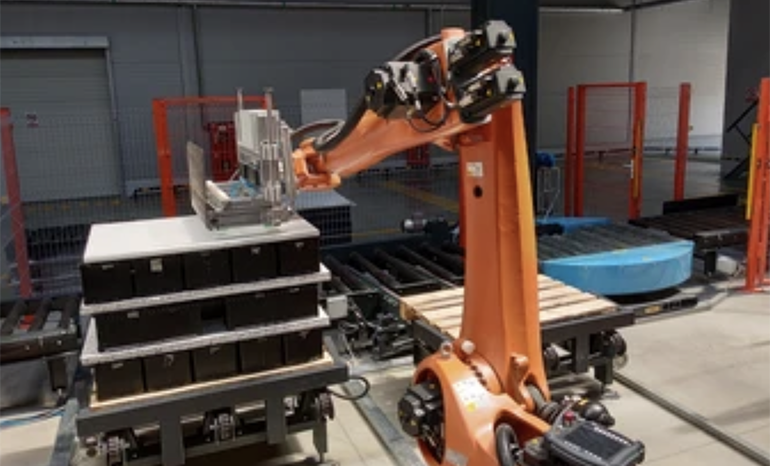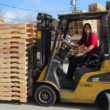What’s the Best Way to Automate Pallet Handling?
You hear about it often. More companies are automating pallet handling to improve efficiency, reduce labor costs, optimize operations, and enable growth. So, what’s the best way to do it?
You hear about it often. More companies are automating pallet handling to improve efficiency, reduce labor costs, optimize operations, and enable growth. So, what’s the best way to do it?

When implementing pallet handling automation, it’s essential to conduct a thorough analysis of your facility’s layout, workflow, and specific needs. Additionally, consider factors such as scalability, maintenance requirements, and the potential for future technology advancements. With this in mind, you can determine which of the following automation strategies (or combination) works for you:
Automated Guided Vehicles (AGVs) – AGVs are mobile robots that can transport pallets from one location to another within a facility. They can follow predefined paths using sensors, magnets, or vision systems to navigate through the space.
Conveyor Systems – Widely used in most warehouses, conveyors move pallets within a facility in conjunction with other automation systems to create a seamless material handling process.
Automated Storage and Retrieval Systems (AS/RS) – AS/RS uses robotic arms or cranes to automatically store and retrieve pallets from racks or shelving systems. This system optimizes vertical space in warehouses and reduces the need for manual forklift operations. AS/RS can be combined with conveyor systems for a comprehensive automation solution. Click here to read how a leading drug manufacturer turned to AS/RS technology to optimize its operations.
Robotic Palletizing Systems – Robots palletize products onto pallets in a precise and efficient manner. These systems are often used in the final stages of production or packaging lines. Vision systems can be integrated to identify and handle different products and pallet configurations.
Automated Forklifts – Similar to AGVs, automated forklifts can handle the movement and stacking of pallets. These forklifts are equipped with sensors and navigation systems to operate autonomously. Automated forklifts can be programmed to perform specific tasks, such as loading and unloading trucks or transporting pallets between different areas.
Internet of Things (IoT) Sensors – Deploying sensors on pallets can provide real-time information on their location, status, and contents. Using this data can optimize pallet handling processes and improve overall logistics.
Rose Pallet can lend guidance and provide the right pallets to ensure compatibility with your system.
 Aug 17, 2022
Aug 17, 2022
It’s no secret that we sell pallets. And there are many other companies that sell them too. So, what makes us different? It all comes down to what we say and what we do. Those two things keep customers coming back.
continue reading double_arrow Apr 26, 2023
Apr 26, 2023
We’ve all done it before. Bought something and then regretted it later. Fortunately, a pair of shoes that look great online but cause discomfort, can be returned. But what about pallets? Does it matter which one you buy?
continue reading double_arrow






